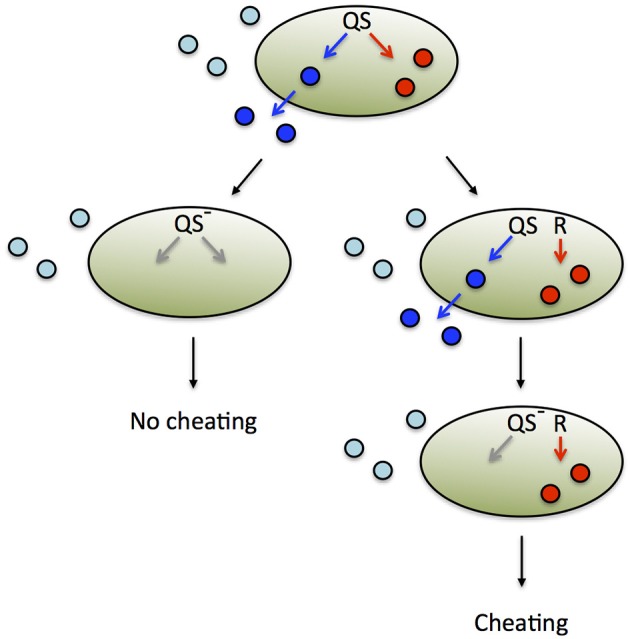Figure 4.

Alternative regulatory schemes and evolutionary fates. The expression of secreted, public goods (blue) and private goods (red) is co-regulated by QS (top). Public goods produced by the focal cell (dark blue) are distinguished from those produced by other cells (light blue). A loss-of function mutation in a QS pathway component (generally a transcriptional regulator) renders a strain deficient in both public and private good expression (left). In an environment that favors private good expression, this strain is unable to cheat and exploit public good production by the group. However, this form of pleiotropic cheater control is not evolutionarily stable, because it is susceptible to invasion by an alternative strategy (right). One or multiple mutational events can render private good expression independent of QS. In the example shown, private good expression is brought under the control of a different regulator or regulatory system, R. When a successive mutation in QS renders the strain deficient in public good expression, it is able to cheat and spread, because private good expression is now independently regulated.
